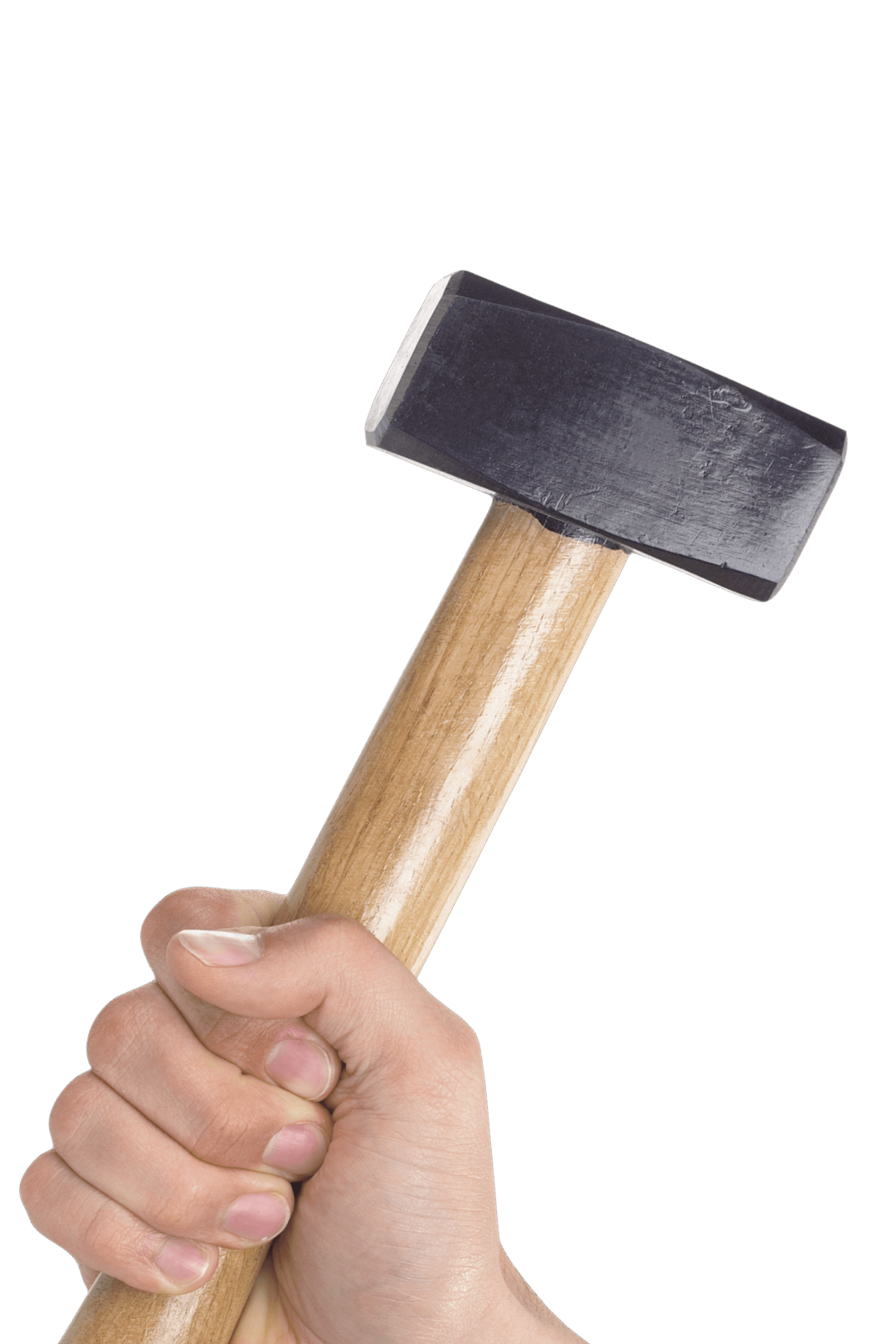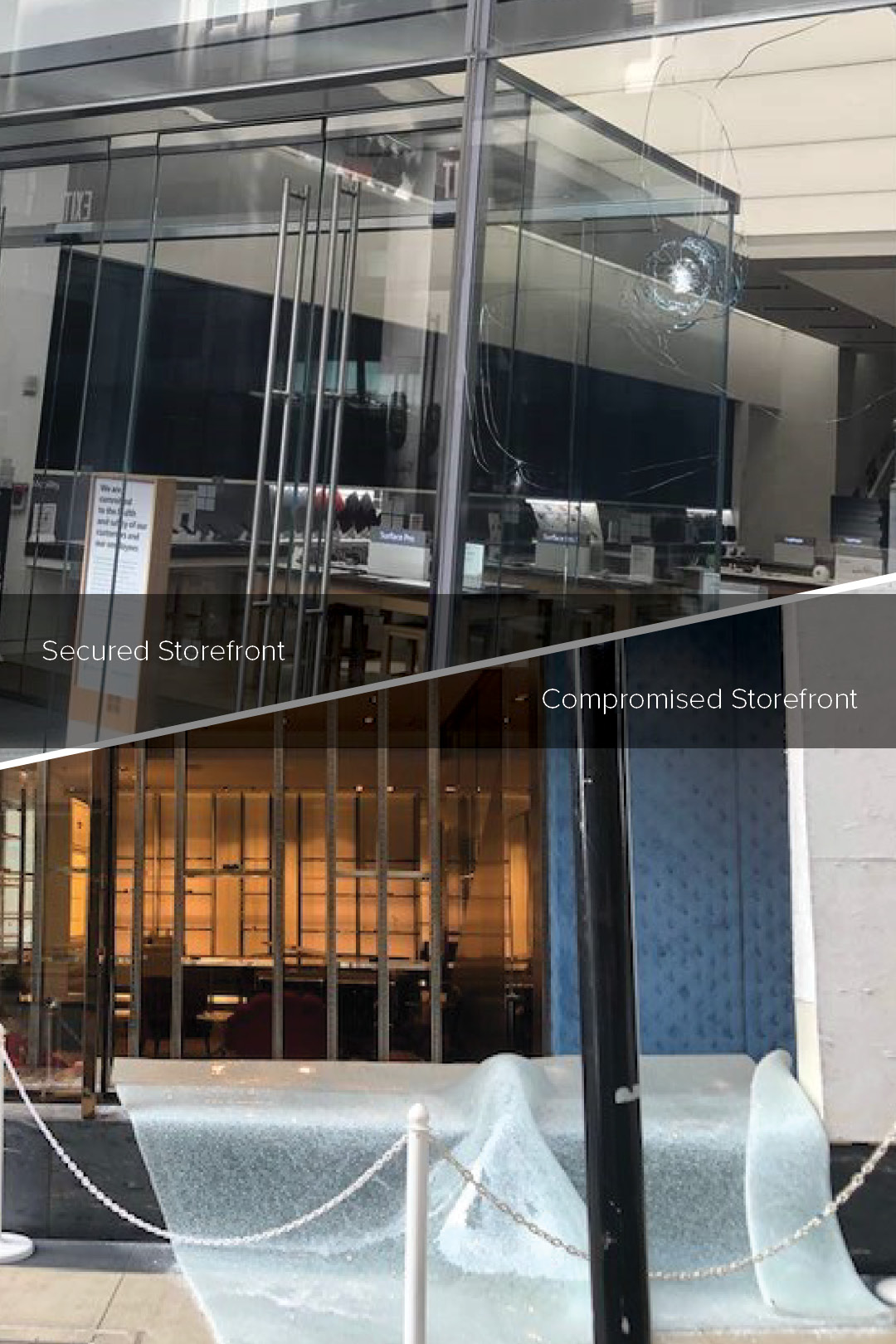Security of the retail storefront

It’s all about the right spec…

NEED TO TAKE THIS PAGE WITH YOU?
Download this handy 1-page information sheet.

What to Consider
As oversized architectural glass continues to find its way into retail storefronts, the need to understand available laminates and tempering options becomes an important consideration for storefront security and loss prevention. Understanding the interplay between laminates and heat treatment options becomes important when addressing security with the end client.
Louis Moreau, Head of Innovation & Technology at AGNORA
We often address how to create beautiful environments for our clients, but security is equally as important.
We should talk more about it.
Understanding Security Levels
There are varying standards that can be employed to measure the “security” potential of architectural glass. Not all of these measuring systems are created equal. A system designed to provide consistent results should have a repeatable set of measurement criteria, but as seen, this is not always the case.
The two North American Standards are:
- UL 972 offers a good and repeatable procedure but only one level of protection. It is not very stringent compare to European standard (see table below).
- ASTM F1233 offers up to 41 sequences of safety but its repeatability depends on “Six males, muscular (180 to 250 lb – 82 to 113 kg), in good health, who carry out an enthusiastic assault.”
Is an “enthusiastic attack” repeatable in term of impact energy?
We prefer European Security standards as they are more repeatable and offer several levels that can be tailored to your store location and merchandise value.
Here are some simple rules using EN 359 or ISO 16936-1 standards:
EN 359 relies on ball drops that are repeated at different heights. For higher level it uses a sophisticated testing apparatus that simulates sledgehammer and axes hit.
As is evidenced, a rating from a European standard allows glaziers, architects, and contractors to specify glass that can resist a predetermined amount of energy, providing stakeholders with the appropriate level of theft protection across all storefronts, and all glass.

INTERLAYERS & HEAT TREATMENT
Tempering may not be your best solution, PVB interlayer may not withstand an attack. Knowing the best combinations of glass makeup will provide your client with the best theft protection money can buy.
HEAT TREATMENT
Heat treated and fully tempered architectural glass both play important roles in retail applications. If heat-treated architectural glass is a specification, consider these conditions:
HEAT STRENGTHENED
- x2 strength of annealed glass
- breaks in large islands
- is effective at reducing break-ins when paired with an interlayer. The large islands allow the interlayer to continue to support the architectural glass lite
FULLY TEMPERED
- x4 strength of annealed glass
- breaks in small pebbles and is safe for the public
- used as monolithic it does not provide security because a simple punch can destroy and allow immediate access to merchandise (smash & grab)
- should be used when a stronger structural glass is required for and with a stiff interlayer.
INTERLAYERS
Interlayers are the plastics sandwiched and bonded to two sheets of glass in order to effectively increase thickness, decrease deflection, and in many cases, create a secure boundary between the retail storefront and intruders.
PVB – “The Original”
PVB or polyvinyl butyral is a safety film originally developed for car windshields. It acts to keep annealed or heat-treated glass together in the event of an attack. It prevents debris from flying and hurting people.
SENTRYGLAS – “New & Improved”
Invented originally for markets prone to hurricanes and severe weather, SentryGlas offers tear strength and rigidity over conventional PVB. As this interlayer is designed to withstand multiple, high-velocity impacts, it is the gold standard for storefront theft protection. In the event that an annealed or heat-treated laminated glass lite is attacked, SentryGlas ® will continue to act as a barrier, deterring most would-be intruders.


